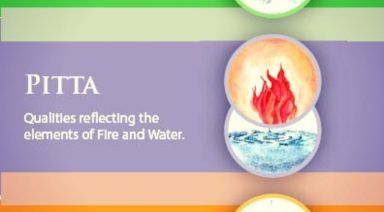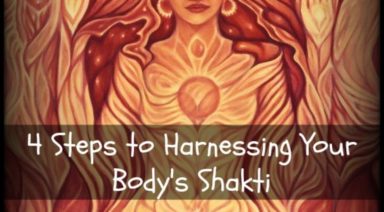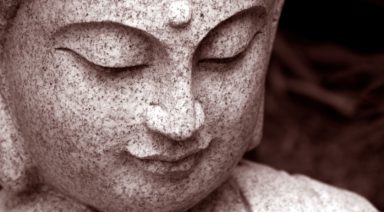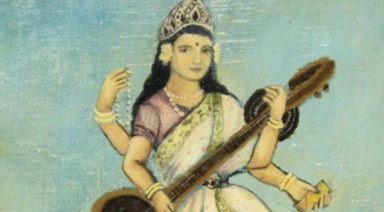Studies Show Mantra Repetition Has Measurable Healing Effect

New studies show that repeating sacred sounds can have a powerful effect on your health and well-being.
The practice of mantra, or the repetition of sacred sounds, has been an integral part of many spiritual traditions throughout the ages. Today, exciting new research is scientifically validating the profound psychological and physiological benefits of this ancient practice.
Dr. Shamini Jain is a leader in the emerging field of biofield science and author of “Healing Ourselves.” She knows mantra repetition to be a highly effective tool for consciousness expansion and healing.
“Sometimes we get so bogged down in the conditioned mind that we find it harder to reach our spirit,” Jain said. “So, mantra is a tool for us to reach our spirit, whether we call that ‘God,’ ‘deep consciousness,’ ‘higher self’ — there are many names for it, but it’s really a technique for transcending the mind. And it can be something that’s spoken out loud, literally like repeating a word out loud, it can also be something that we repeat silently. It can also be sung, and many traditions — almost all global traditions really — have some type of practice where they utter sacred sounds.”
In ancient traditions, the primary function of mantra was to connect with the divine.
“In these traditions, there was a deep relationship of sound with consciousness. Working with mantras in these ancient traditions, it was leading you to expand your consciousness so that you can be in better contact with divinity,“ Jain said.
With the growing interest in studying these ancient systems, scientific research is now starting to explore the ways in which mantras may affect the body and mind. One recent focus of study has been on the effect of mantras on psychological conditions.
“There is a body of literature that has been published, for example by Dr. Jill Bormann at University of California San Diego, and she examined what they called “mantram” repetition, which was essentially the uttering of a sacred sound,” Jain said. “They’ve done studies, for example with veterans with PTSD, showing reductions in PTSD symptoms for those who repeated a sacred word or phrase, compared to just repeating something that had no spiritual meaning.”
Other recent studies are showing the effect of mantra on physiological markers of health.
“Some of the strongest data that we see with mantra practice is the effect on the heart,” Jain said. “So we actually see that practicing different forms of mantra, whether it’s Buddhist, Hindu, or other traditions, has an effect on reducing blood pressure and improving cardiovascular health. There are some studies also looking at this in terms of heart rate variability, which is really the dynamic dance of your autonomic nervous system. Any way you look at it, the data are pretty clear that mantra meditation has a profound effect on heart health.”
Yet another groundbreaking study has shown that mantra repetition in the form of kirtan, or call-and-response singing, has an effect on cell aging.
“They found not only reductions in mental and emotional suffering, such as stress and other factors, they found increases in markers of cell aging. Specifically, they saw shifts in an enzyme called telomerase, which helps to protect our cells against aging,” Jain said.
While the healing effects of mantra practice are clear, scientists are working on understanding the mechanism behind which this works. One fascinating recent study looked closely at brain function.
“In terms of the brain, a really interesting study that was published in a top-tier journal Nature Scientific Reports, looked at the effects of Buddhist meditation and chanting particularly, compared to just chanting regular words,” Jain said. “Interestingly what they found was, first of all, the chanting of the Buddhist words by these people who were just being trained in how to do it, resulted in increased delta waves. Enhanced delta wave activity has been found in many forms of meditation. Those increased delta waves in the brain seem to be connected to the meditator’s — in this case, the chanter’s — experience of an expanded sense of self that was beyond conditioning.”
As there are many ways to practice mantra, Jain recommends finding a tradition that you resonate with and an experienced teacher to guide your practice. She has high hopes that scientific interest in mantra continues and deepens.
“There needs to be more research in mantra meditation, specifically integrating some of the perspectives from the spiritual practitioners, as well as things like brain changes. A lot of these practices were really meant for us to have whole-person well-being, which means spiritual, physical, emotional, social, (and) relational. So that’s the type of research we want to see with mantra meditation. We’re not just looking at one brain factor, but we’re really looking at the whole person,” Jain said.
3 Magical Mantras to Experience an Attitude of Gratitude

Showing appreciation for all that we have is one of the most important factors in manifesting a splendid life, and a feeling of gratitude is something we should experience every day.
When we strive for our goals from a place of lack and need, we send a message to the Universe that we are “running away” from something, as if there is “something wrong” with our present reality. This gives off a vibration of desperation and scarcity, and therefore, we attract more of the same. The great paradox is that when we are truly grateful and appreciative of our life as it is NOW, we send out the positive vibrations of abundance, therefore attracting in more wonderful people, prosperity and experiences. The more abundant we feel, the more abundant we become.
Gratitude is also a wonderful way to bring us into present time consciousness. When we are in a state of gratitude, it means that we are indeed, paying close attention to and appreciating everything that we have right NOW. In contrast to the sensation of striving to a better life that we convince ourselves will improve at some point in the future when we achieve or attain X, Y or Z. Being in the present allows us to experience joy, peace and calm. As all worries are about future anticipated events and sadness and pain comes from past memories.
Use these gratitude mantras to create a serene meditation, with your eyes closed as you imagine yourself looking into the cosmos. You will be put into a deeply profound state of gratitude, guaranteed to change your energy vibrations from negative to positive. You will align with the frequencies of abundance and love so that everything you wish for flows naturally into your life.
By using theses Magical Mantras throughout the week you will:
- Embrace an attitude of gratitude.
- Increase and enhance your energy vibrations.
- Attract abundance and joy.
So, now, if you’re ready, here are your three Mantras to bring yourself into a profound state of gratitude. With your hands on your heart, repeat these three Mantras throughout the week and feel their vibrational energy entering in your being:
- I appreciate the abundance in my life and I allow myself to expand in gratitude, success and joy everyday.
- I clearly see all there is to be grateful for in life. I acknowledge the blessings I have received in my life with gratitude.
- Gratitude brings me into a harmonious relationship with the good in everyone and everything that surrounds me.
You can permanently re-wire your subconscious mind to accept these affirmations by listening to them in a deep meditative state with guided meditation.
Enjoy and let me know how you go!




































